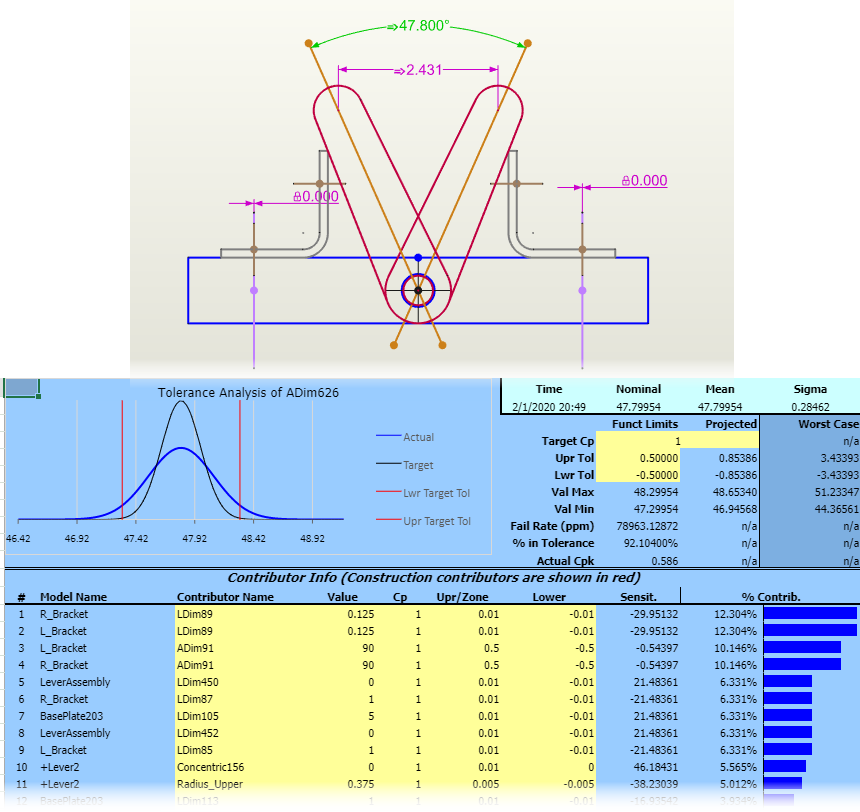Duplicate Contributors
Release Notes
This section reflects additions or changes that apply to Enventive Concept v4.2 and later. We strongly recommend upgrading to the most current version of Concept to take advantage of new features and bug fixes. If you are running an earlier version of the software, please open the Online Help for your version using the Enventive Concept Help menu.
Concept 4.2 lets you toggle combination of duplicate contributors on/off using the Properties Explorer.
Depending on how the model instance copies are being used in the assembly, tolerance analysis results may be more accurate if you combine the duplicate contributors. However, in most cases, tolerance analysis results are more accurate when you separate duplicate contributors, because each contributor retains its own tolerance and sensitivity values.
For instructions on how to combine duplicate contributors, see Combining duplicate contributors.
When to combine duplicate contributors
For example, in the model below, we see the assembly contains two copies of the Lever model instance (Lever_Position_1 and Lever_Position_2). However, the multiple copies are being used only for motion analysis purposes. The part contains only one lever, but there are two lever positions, which are represented by the two Lever instances. Conversely, the multiple Bracket instances (L_Bracket and R_Bracket) both exist as individual parts in the model; there is a left bracket and a right bracket.
The purpose of this model is to analyze the motion between the two Lever positions. Therefore, when we analyze the model, we must combine the Lever contributors to accurately reflect that there is only one lever, and leave the Bracket contributors separate, to account for their individual effects on tolerance analysis.

When you combine duplicate contributors, the sum of their sensitivities is used for the single combined contributor. You can select model instances individually when combining duplicate contributors, leaving other model instance's duplicate contributors separate. In the Lever example, we would combine the duplicate contributors for the Lever, but leave the Bracket instances' duplicate contributors separate.